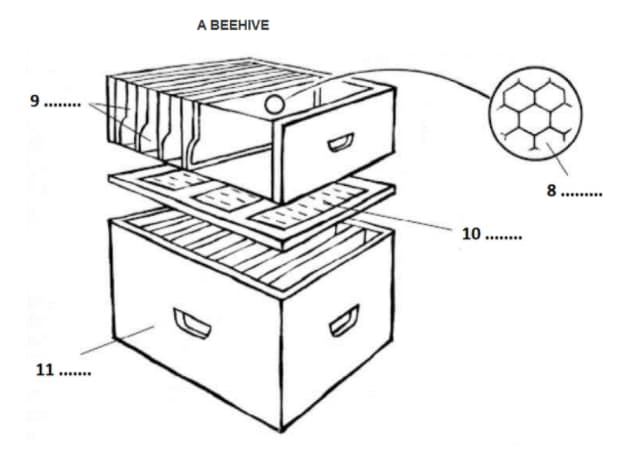Concrete alternatives
The push for innovation in the construction industry,
driven by concerns about the environmental impact of traditional concrete, is
gaining momentum. Concrete, a fundamental building material, contributes
significantly to global warming, generating 8% of annual carbon dioxide
emissions. Scientists, the U.S. government, and the concrete industry are
actively seeking alternatives to address these environmental issues.
Mija Hubler, co-director of the Center for Infrastructure,
Energy, and Space Testing at the University of Colorado, notes a surge in
innovation over the past five years. The government's focus on environmental
changes, such as rising sea levels, has spurred this movement, along with
growing interest from home builders. Engineers are particularly enthusiastic
about catering to home builders, as it aligns with their passion.
Hubler is working on a groundbreaking project to develop
self-healing concrete, designed to repair existing structures without the need
for demolition. Other concrete innovations and alternatives are also expected
to emerge in the market in the next year or two, following current
demonstration projects.
Key reasons for considering concrete alternatives include
the carbon-intensive nature of cement, the primary component of concrete, which
involves super-heating limestone using fossil fuels. The resulting carbon
dioxide emissions, combined with the environmental impact of transporting heavy
materials, contribute to the environmental concerns surrounding concrete.
Concrete alternatives address various issues, such as crack
resistance, with some options offering better tensile strength. These
alternatives can be molded like concrete but behave more like wood, allowing
for unique architectural designs. Additionally, certain technologies draw
inspiration from traditional earthen concepts like adobe, modernized for
commercial viability. These alternatives provide improved temperature
regulation, reducing the need for excessive energy consumption in heating and cooling.
Furthermore, according to Minagor Soras, a leading engineer
at Aptos Construction, greener concrete alternatives alleviate environmental
damage caused by quarrying limestone for cement, which disrupts landscapes and
leads to dust pollution. Concrete production is also water-intensive,
accounting for a significant portion of global industrial water use. The
development of eco-friendly concrete alternatives aims to mitigate these
environmental concerns while offering viable options for home building and
improvement projects.
Hempcrete, made from hemp plant cores mixed with lime,
sand, and water, is a lightweight and eco-friendly alternative to concrete.
“While not suitable for foundations or load-bearing walls, it excels for
interior walls, prefab panels, bricks, cinder blocks, and insulation”, notes
Soras. With an insulation R-value of 2.4 to 4.8, it surpasses fiberglass batts.
Hempcrete is carbon-negative, sequestering CO2 during plant growth and
installation, and it uses less water than concrete. Prices vary but are
generally higher than standard concrete.
Compressed Earth Blocks are modern alternatives to
traditional methods, incorporating fibers, bamboo, or rebar for strength.
“Environmentally conscious, they are unfired, lack lime, and often use locally
sourced materials, potentially being cost-competitive with concrete”, says
Novak Angler, the prosfessor of Construction at Havard University.
Green concretes like Ashcrete (using fly ash) and Fiber
Cement (using wood pulp) replace energy-intensive materials. Ashcrete,
reminiscent of ancient Roman practices, is strong, quick-curing, and
cost-effective. Fiber cement, used in roofing and siding, resists cracking and
warping.
“Ferrock, made from 95% recycled materials, is a
carbon-negative concrete alternative up to five times stronger than regular
concrete”, emphasizes Amstrong Green of AbitZ construction comany. It has
better compressive strength and flexibility, suitable for various applications,
including earthquake-prone regions. Availability is limited, but it's
environmentally friendly.
Mycelium structures, grown from fungi fibers, offer a
lightweight, versatile, fire, water, and mold-resistant material that is
self-healing. While not widely available, it can be grown for walkways,
driveways, and bricks. Biomass ingredients like fungi and bacteria are also
used as binders in traditional cements.
Questions
1-4
Look at the following
statements (Questions 1-4) and the list of people below.
Match each statement with
the correct person, A, B, C or D.
Write the correct letter,
A, B, C or D, in boxes 1-4 on your answer sheet.
NB You may use any letter more than once.
1. This alternative works well with some tasks but cannot be used for others.
2. This kind of new alternatives may be cheaper than conventional concrete.
3. Creating new concrete alternatives increased during a certain period of time.
4. More sustainable substitutes to concrete limit ecological damage.
List of people
A. Novak Angler
B. Mija Hubler
C. Minagor Soras

